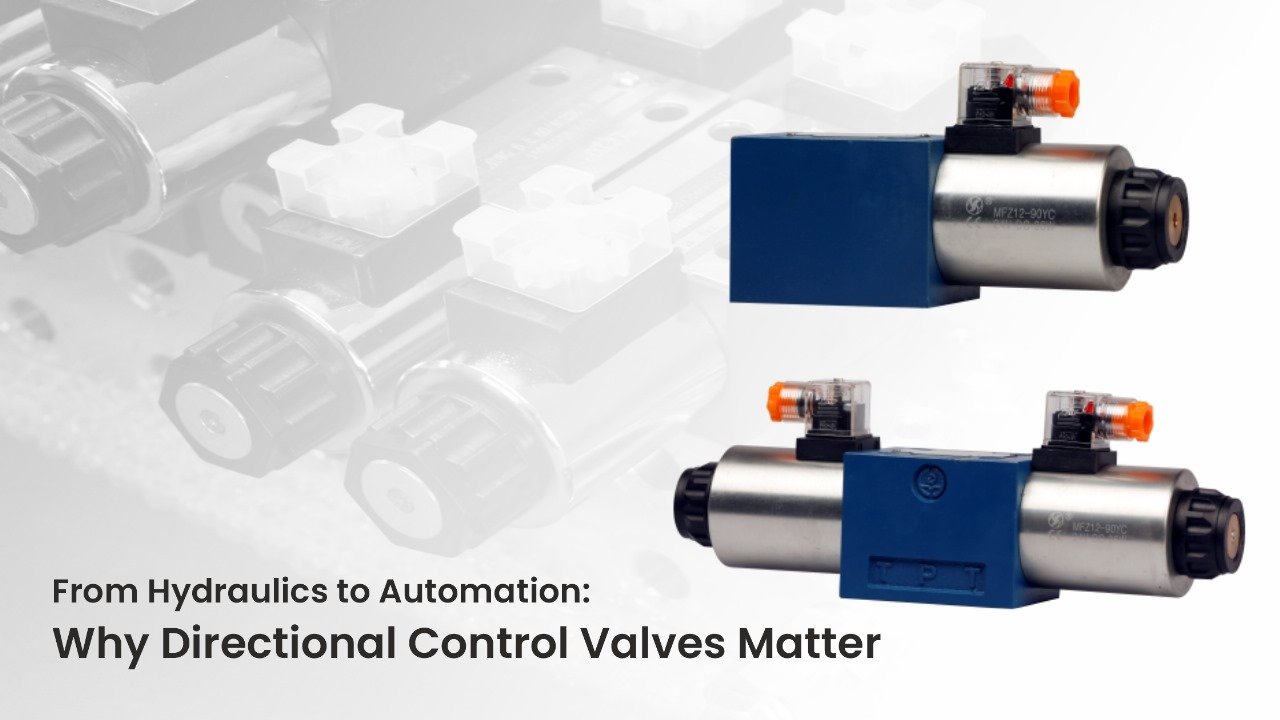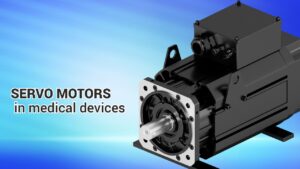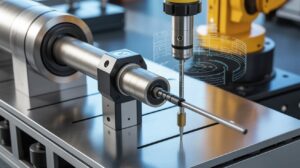The hydraulic and pneumatic system depends on the Directional Control Valves that direct fluid or air flow to operate a machine effectively. The construction, manufacturing, and automation industries would be inefficient and experience costly downtime without the appropriate hydraulic directional valve. THM Huade is a manufacturer of superior directional control valves designed to deliver performance, reliability and precision in high-performance applications.
What Are Directional Control Valves?
A directional control valve is a system control device that works to control the flow of a hydraulic fluid or compressed air. It regulates the direction of flow so that actuators such as motors or cylinders can be used at the point and time they are needed.
Key Functions:
- Change, start and stop fluid flow.
- Control system pressure, speed indirectly.
- Allow safe and efficient use of hydraulic and pneumatic systems.
Types of Directional Control Valves
Valve setups that are needed in different industries vary. Common options include:
2-Way Directional Valve:
- 02 ports inlet and outlet.
- Mostly applied in the control of simple on/off fluid.
3-Way Directional Valve:
- Features three ports.
- Is able to discharge direct fluid to an actuator and pump it back into the tank when not in use.
- In pneumatic directional valves.
4-Way Directional Valve:
- Equipped with four ports.
- Distribution Control Double acting cylinder, so it is suitable in highly automated work.
- The most common electrical actuation solenoid directional valve.
Why Directional Control Valves Are Important
The smooth operation of a hydraulic motor like the industrial directional valve is needed in:
- Manufacturing machinery
- Agricultural equipment
- Injection molding systems
- Automation and robotics
The advantages of Directional Control Valves
- Precision: Provides the correct actuator movement.
- Efficiency: minimizes wastage of energy.
- Safety: Averts system overloads and failure.
- Flexibility: There are several kinds of valves that can be adapted to the requirements of a particular industry.
Applications Across Industries
Directional control valves are located in nearly all the areas which rely on fluid power:
- Construction Machinery: Excavators, loaders and cranes.
- Automobile Industry: Conveyor belt and robotic hands.
- Manufacturing Plants: Hydraulic presses and cutting machines.
- Aerospace & Defense: Flight control and landing gears.
- Agriculture: Harvesters and tractor.
Selection of the Right Directional Control Valve
In the choice of control valve, it is important to take into account:
- Flow rate requirements.
- System pressure capacity.
- Actuation system: manual, hydraulic or solenoid directional valve.
- Hydraulic or pneumatic compatibility.
Maintenance Tips for Long Lasting Valves
To achieve quality performance of your directional control valve:
- Periodically examine leaks or wear.
- Maintain the fluid clean by adequate filtration.
- Change seals and parts.
- Service by manufacturer instructions.
Final Thoughts: The Vital Role of Directional Control Valves
Directional control valves have been a staple of efficiency, accuracy, and safety since hydraulics. It can be a 2-way directional valve, 3-way directional valve, or 4-way solenoid directional valve, but by selecting the appropriate solution, you are guaranteed that your systems will operate well.
We provide high quality hydraulic valves and industrial directional valves designed to suit various applications. Call THM Huade today to discuss the most effective solution to your hydraulic and automation application.
FAQs About Directional Control Valves
Q1: What a direction control valve is used in a hydraulic system?
It directs the flow of hydraulic fluid in a way that allows actuators, including cylinders and motors, to be set out, set back or stopped where required to ensure extremely precise control.
Q2: What factors should be considered when selecting a control valve for a hydraulic system?
Flow rate, operating pressure, actuation (manual, hydraulic, or solenoid), system compatibility, and longevity under working conditions are the most significant.
Q3: What is the difference between a check valve and a directional control valve?
A check valve only allows the fluid flow in one direction and not the reverse. However, a directional control valve does not only flow in one direction as it moves fluid in more than one direction when required.
Q4: How to check hydraulic directional control valve?
Check leaks, free movement of the spool, test actuation (solenoid or manual) and check system pressure to confirm correct operation.
Q5: Which are true statements about directional control valves?
They control fluid movement, actuator motion, enhance system safety and are available in 2-way, 3-way or 4-way designs to meet most applications.
Q6: What is a 4-way directional control valve?
It has four ports and is mostly used to drive two-way cylinders, to give an accurate extension and contraction in each direction.



